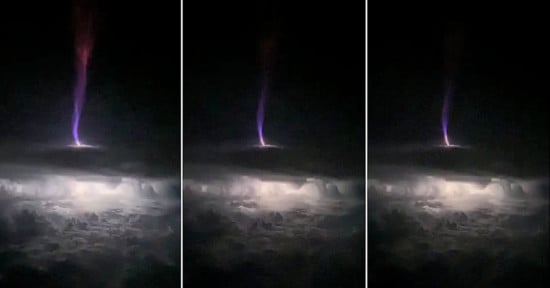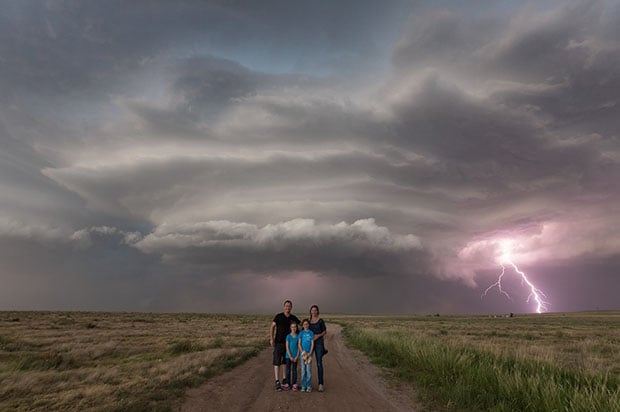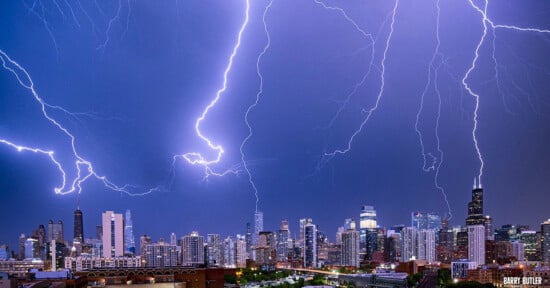Photographer Captures Gigantic Jets of Lightning Shooting Above Tropical Storm
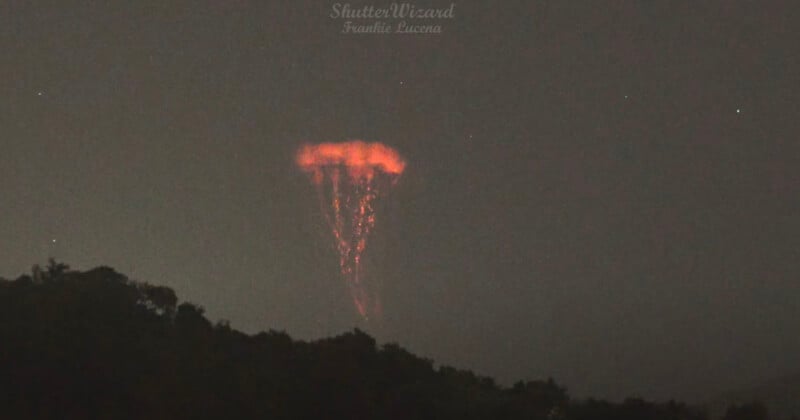
A photographer documenting a tropical storm in Puerto Rico captured three gigantic jets of lightning shooting above the clouds.
The upward-moving lightning bolts are extremely rare and have only been recently confirmed by science. Gigantic jets only occur 1,000 times a year and are 50 times more powerful than a regular lightning bolt.
Frankie Lucena used two cameras to capture the phenomenon, a black and white Watec 902HU designed for light sensitivity. And a Sony A7s astrophotography mirrorless camera that also performs well in low light situations.
The tropical storm that Lucena was capturing on August 20 developed into Hurricane Franklin. The gigantic jets that his cameras saw are red because they made contact with the Earth’s ionosphere which is 50 to 400 miles above sea level. Scientists believe most gigantic jets occur during thunderstorms above the open ocean.
Lucena, who regularly photographs rare weather phenomena, was looking southeast from Cabo Rojo, Puerto Rico when the gigantic jets occurred early in the morning around 03:00.
According to the Daily Mail, it is not the first time Lucena has documented the gigantic jets. In 2017, Lucena noticed gigantic jets recorded by the Gemini Cloudcam mounted to the Mauna Kea Observatory in Hawaii.
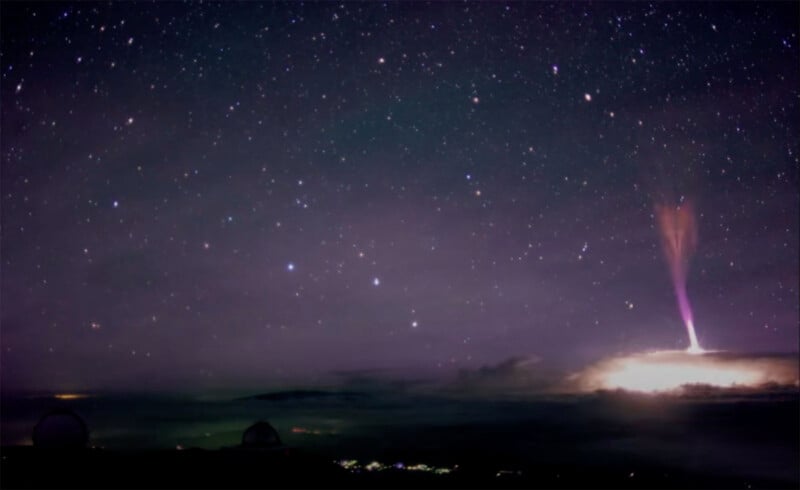
Lucena told SpaceWeather in a 2017 interview that gigantic jets are related to lightning sprites but are “more powerful and easier to see with the naked eye.”
Gigantic Jet Mystery
Scientists have yet to uncover the reason why gigantic jets shoot upward rather than down like typical lightning bolts. Live Science reports that it could be because of some sort of blockage that prevents the lightning from exiting the bottom of the cloud but researchers remain unsure.
In 2017, an astronaut on board the International Space Station (ISS) managed to capture footage of the phenomenon that allowed scientists to gain a new perspective on the electrical activity that takes place on top of tropical thunderstorms.
More of Lucena’s work can be found on his X, YouTube, Instagram, and Flickr.
Image credits: All photos by Frankie Lucena.
